I could be mistaken but I think a Northern Flicker (Colaptes auratus) has been enlarging the opening on one of my bluebird houses.
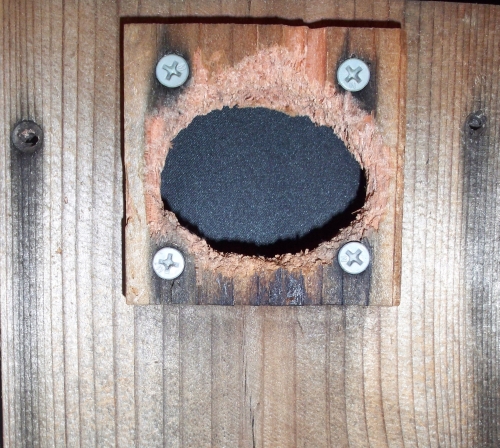
It could be an Acorn Woodpecker but I have been seeing quite a few Northern Flickers around the area where this box is located. You can see the entrance hole has been chiseled out from 1 1/2 inches to over 2 inches. The square block of wood on the front of the box acts as a porthole protector to help alleviate this problem but a determined woodpecker can make short work of that.
This is the time of year to check all of your birdhouses, making repairs and making sure they are clean and ready for occupancy. Many times I find acorns stashed by Acorn Woodpeckers or squirrels in the nest boxes, and depending on where the nest boxes are located, the porthole protectors may need replacing.
The Northern Flicker is a large, primarily ground dwelling woodpecker, that is common all across North America. We have the “red-shafted” subspecies here in the West, the shafts of the flight feathers being bright salmon color. The male has a red mustache. Click on images for full sized photo.
Flickers primary food is ants and other insects, they will however, eat some fruits and seeds in the winter. You can see the mud on this male’s beak. He is in the process of anting, foraging for ants in the ground by probing the soil with his beak.
The female looks similar to the male but lacks the mustache.
She looks a bit more demure in this photo, without the mud on her beak.
They both have a white rump patch that is conspicuous in flight.
Northern Flickers are a cavity nesting species, excavating their nest sites, usually in dead or diseased tree trunks or large branches. The average size of the entrance is about 2 1/2 inches and the average time it takes a pair to excavate the nest cavity is about two weeks1!
This is their call and drumming sound, recorded by Todd Wilson and courtesy of Xeno-canto.
[audio:https://thebirdersreport.com/audio/flicker_callinganddrumming.mp3]I will be putting up a nest box for our Flicker friends following the instructions on my Nest Box Plans page. Since they are excavators, they are more likely to use the nest box if it is stuffed with wood shavings, simulating a dead snag. I am going to mount the box about 6 or 8 feet up, attached to the trunk of a live oak tree in the vicinity of where my bluebird house is located. It also happens to be on the forest edge where Northern Flickers prefer to nest.
The plan uses one 12 foot 2″ x 8″ board but the only dimensional lumber I found this size was Douglas Fir and it’s pretty smooth lumber. I found some 2″ x 12″ rough cut redwood that was part of a raised bed in our previous garden that I want to use also. I have decided to make two nest boxes and place them in different locations and see what happens.
While researching this post, I learned that Northern Flickers engage in a dance during the early stages of the breeding cycle. I didn’t know this and have never witnessed it but I hope to soon. I found a few videos of this phenomenon and chose this one to share.
To see more great bird photos, check out Bird Photography Weekly!
References: 1 Birds of North America Online

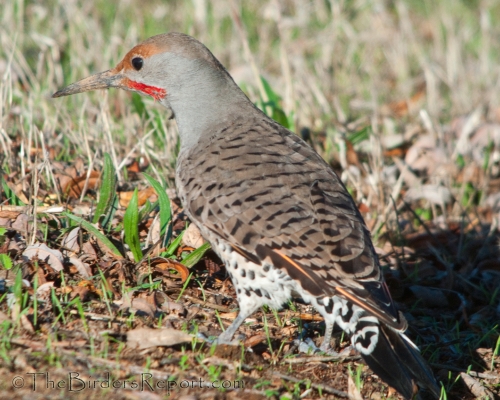
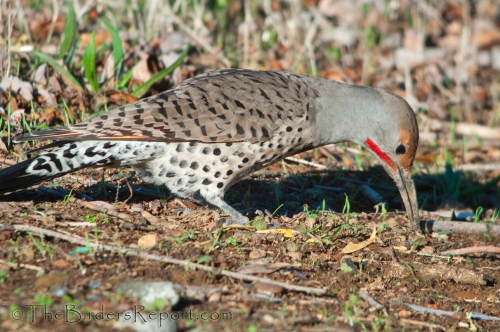
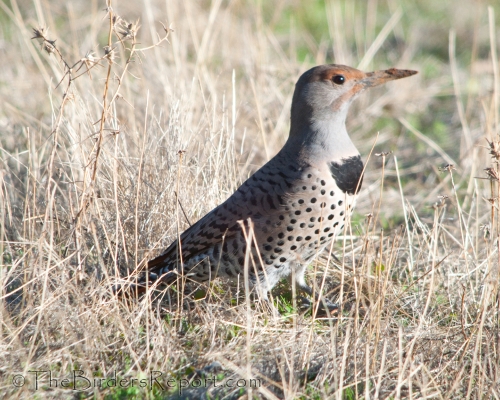
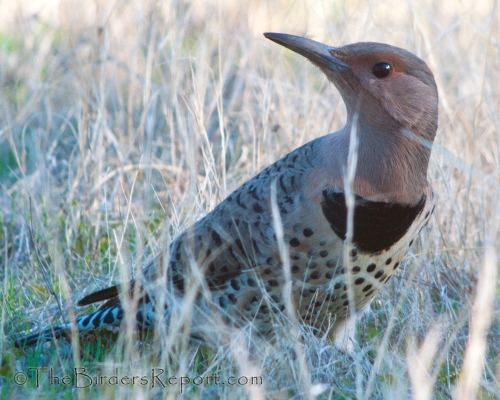








Comments on this entry are closed.
I have also experienced woodpecker assaults on my bird boxes. It can be a headache, but it also really makes you appreciate just how efficient and powerful these master chisl’ers are! Nice pics of flicks on the ground. I remember the first time I saw a Northern Flicker foraging on the ground, at first I thought it was really really strange…little did I know just how perfectly normal it is for this particular species.
I love flickers. We have yellow-shafted here–thanks for sharing yours!
smart birds, they made it easy for themselves. They look great and it is an interesting post. Thanks for sharing Larry. Enjoyed the dance as well. 🙂
Often times there are mice occuping nest boxes here,so I`ve been tapping on the outside before reaching in to clean after my experiance with a bunch of them coming out at me!
You captured great pictures of the flicker,we have them here,& I did not know at first what one was doing in the grass.Now I know,thanks for sharing,phylliso
Smart move to give them their own box 😉
They seem to be determined to get one anyway 😀
Lovely shots of this beautiful bird!
Great photos of the Flicker, Larry.
Recently on the talkinbirds show (www.talkinbirds.com) I heard something about metal rings you can put over bird house holes to protect them from being enlarged by other birds or squirrels. Maybe that would help!?
I have had some success with cutting a small square out of a two liter bottle of soda, then cutting the appropriate size circle for the entrance in the square, and gluing it to the box. Not very pretty, but cheap, and so far it seems to work pretty well.
Cool video, I loved watching the dance. Thanks for sharing, Larry!
Beautiful photos, Larry. Perhaps your readers might enjoy these photos of a female Northern Flicker dining on critters in my backyard.
Crazy flicker! They’re awfully feisty! Great shots of them on the ground, it looks like they’ve got no worries! As often as I see (and hear!) them, I’ve never gotten a photo – go figure!